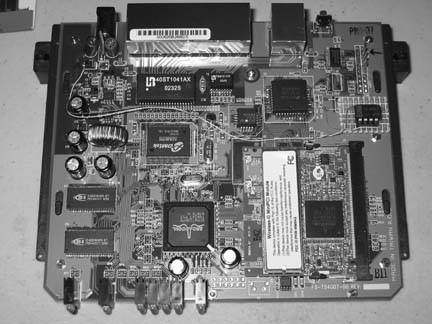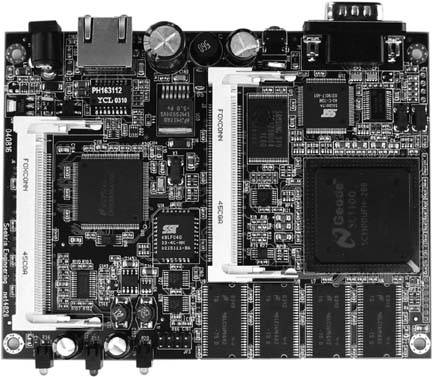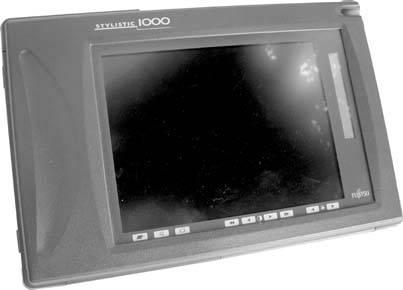Hack 53. Do-It-Yourself Access Point Hardware


Use one of these popular embedded PC boxes as a building block for your access point project.
There is a huge variety of PC-compatible hardware available that is perfectly capable of serving as an access point. If budget is a concern, you can certainly pull out that old PC that is collecting dust in the closet, provided that it is roughly of 486/50 vintage or so. 386 machines, while nostalgic, are too painfully slow to deal with by today's standards. Some people choose to use a full-blown tower case with an old 486 or Pentium processor as a combination access point and file server.
If you are planning on building out a large network project, it is advisable to standardize your hardware platform. This is a good idea from an aesthetic point of view, as well as for reliability and ease of troubleshooting. While your dusty old 486 might be just taking up space, brand new embedded machines are coming down in price. These are tiny, fanless machines that are designed to run on DC power and boot from cheap compact flash RAM. This means no moving parts, simple ventilation requirements, and potentially very long uptimes.
Not all embedded solutions are necessarily cost effective. One notorious example is the PC/104 hardware used in industrial embedded applications. Although it offers relatively low performance, this hardware has a reputation for robustness and ease of programming, as well as the standard PC/ 104 stackable bus. But even its extreme popularity in the industrial world hasn't done much to bring down its price, relative to what is available in the general-purpose computing world.
Whatever hardware platform you choose, be sure that it meets your needs. When choosing a piece of hardware, you should remember to consider the number and type of radio and network interfaces, cooling and power requirements, size, RAM and CPU available, and of course, cost. Here are a number of solutions that DIY networks have found to bring a high performance-to-price ratio:
Linksys WRT54G (http://www.linksys.com)
This might be the ultimate hackable embedded system. Linksys has released this wireless router in a number of flavors including the WAP54G access point, and the GS series with more onboard RAM and faster processors. Inside is a Broadcom CPU and radio, and out of the box it runs a custom 2.4 Linux kernel. You can pick up new WRT54G units online for around $50. There are also models from Asus, Buffalo, and Netgear with nearly identical internals. You can do a lot of hacking with the WRT54G, including running custom Linux images [Hack #67] and setting up mesh networking [Hack #68].
Figure 4-1 shows a WRT54G Version 1.0 that has been taken apart. The operating system was corrupted while being hacked, and the box would not boot. A serial port has been soldered on to get a console and interrupt the boot process.
Soekris (http://www.soekris.com)
Affectionately known as the "little green box," Soekris boards (shown in Figure 4-2) are a popular choice among do-it-yourself networkers. They are manufactured by Soekris Engineering in Santa Cruz, California. There are a number of Soekris models that work well as access points, with and without PCMCIA. All Soekris boards will boot from Compact Flash or the network via PXE. Most come standard with multiple Ethernet interfaces, a mini-PCI slot, hardware watchdog, serial console, and various processor speeds. They are all fanless boards and use a DC power supply.
Figure 4-1. Slightly modified Linksys WRT54G

One popular model is the tiny Soekris net4826. It provides one Ethernet port, two mini-PCI slots, USB, a 266 MHz Geode processor, 128 MB RAM, 64MB of integrated flash memory, and can be powered via Power over Ethernet. Most Soekris motherboards sell for $150 to $200. Unfortunately, although the green metal Soekris case might be unique, it isn't watertight. If you are looking for a weatherproof Soekris kit complete with radio cards, mounting and pigtails, take a look at Metrix Communication (http://metrix.net). Metrix kits can accommodate up to two radio cards and pigtails, and come pre-installed with an updated version of Pebble Linux [Hack #70]. Metrix also offers discounts for community networking projects.
WRAP (http://www.pcengines.ch/wrap.htm) and Mikrotik (http://www.mikrotik.com/)
Two other embedded boards that are currently popular are the WRAP by PC Engines and the Mikrotik RouterBOARD series. Like the Soekris embedded boards, these are general purpose motherboards that use very little power and can run a variety of operating systems. The WRAP.2C sports a 266MHz AMD processor, Ethernet, Compact Flash slot, and two Mini-PCI slots. The RouterBOARD 200 series is similar, and also includes PCMCIA support. Mikrotik also makes a commercial operating system that requires various licenses depending on functionality, but their boards will happily run Linux or BSD. WRAP boards cost around $175, while the RouterBOARD 200 series runs anywhere from $300 to $500. Mikrotik seems to be moving away from the DIY approach, and now offers a full line of rather expensive networking solutions.
Figure 4-2. The Soekris net4826 motherboard

PC Engines has its headquarters in Switzerland, while MikroTik is located in Latvia. Where they are available, these boards work quite well as wireless routers.
Via-based computers (http://www.via.com.tw)
There are a number of Via-based computers on the market. They are generally marked as desktop PCs, although small, fanless cases that take a DC power supply are becoming commonplace. As they are intended to be used as general purpose PCs, they typically have 500 MHz or better Via processors, on-board NICs, an IDE interface, USB, and a PCI slot. Even better is the MII series of motherboards, which include a CompactFlash reader as well as a Cardbus/PC card slot.
If you are looking for a fanless solution, be sure to get the 600 MHz version, because the 800 MHz and faster Via boards require a processor fan. A Via MII-6000E fanless motherboard (shown in Figure 4-3) without case, RAM, or storage, costs around $170 at the time of this writing.
Figure 4-3. A Via EPIA MII fanless motherboard

The Fujitsu Stylistic series
This collection simply wouldn't be complete without mentioning the Fujitsu Stylistic 1000 series, shown in Figure 4-4. This is a popular surplus market tablet PC that has "hack me" written all over it. It has three PCMCIA slots, one of which is the boot device. It can boot from Compact Flash using a CF to PCMCIA adapter, and is unique in that it has an integrated LCD display and battery. The 1000 series has a 486 DX4/100 processor, is expandable to 40 MB RAM, can use a cordless pen for input, and has served just fine as a hardware gateway (I use one myself for my node on SeattleWireless). Fujitsu still makes the Stylistic series, although new machines are quite expensive (on par with modern laptops). The older 1000s or 1200s can frequently be found on the surplus market for less than $100.
Figure 4-4. Fujitsu Stylistic 1000

Running your own custom access point can be considerably more challenging than the plug-and-play devices you can buy in consumer electronic stores, but building such devices can be much more rewarding as well. Bringing the power and flexibility of Linux or BSD to the access point itself can lead to all sorts of interesting possibilities that just can't be accomplished with most over-the-counter access points. For details on how to get your own Linux-powered access point set up, see "Build Your Own Access Point with Linux" [Hack #63].
Bluetooth, Mobile Phones, and GPS
- Hacks 122: Introduction
- Hack 1. Set Up Bluetooth on Linux
- Hack 2. Set Up Bluetooth on Windows XP
- Hack 3. Connect Mac OS X with a Bluetooth Phone
- Hack 4. Connect Linux with a Bluetooth Phone
- Hack 5. Connect Windows XP with a Bluetooth Phone
- Hack 6. Use Your Treo as a Modem
- Hack 7. Send SMS from a PowerBook
- Hack 8. Remote Control Mac OS X with Bluetooth Phones and PDAs
- Hack 9. Remote Control Linux with a Bluetooth Phone
- Hack 10. Control XMMS with Bluetooth
- Hack 11. Liven Up Parties with a Participatory Slideshow
- Hack 12. Send SMS from Linux
- Hack 13. Remote Control Windows with Bluetooth Phones and PDAs
- Hack 14. Control Your Bluetooth Phone with FMA
- Hack 15. Control Your Computer from Your Palm
- Hack 16. Control Your Home Theater from Your Palm
- Hack 17. Choose a Cellular Data Plan
- Hack 18. Blog from Your Mobile Phone
- Hack 19. Get Google Maps on Your Mobile Phone
- Hack 20. Share Your GPS
- Hack 21. Broadcast Your GPS Position
- Hack 22. Map Wi-Fi Networks with Kismet and GPSd
Network Discovery and Monitoring
- Hacks 2339: Introduction
- Hack 23. Find All Available Wireless Networks
- Hack 24. Discover Networks with NetStumbler
- Hack 25. Detect Networks with Handheld PCs
- Hack 26. Find and Join Wireless Networks with AP Radar
- Hack 27. Detect Networks on Mac OS X
- Hack 28. Scan Passively with KisMAC
- Hack 29. Detect Networks with Kismet
- Hack 30. Monitor Wireless Links in Linux with Wavemon
- Hack 31. Analyze Traffic with Ethereal
- Hack 32. Track 802.11 Frames in Ethereal
- Hack 33. Watch Network Traffic
- Hack 34. grep Your Network
- Hack 35. Check Wi-Fi Network Performance with Qcheck
- Hack 36. Estimate Network Performance
- Hack 37. Get Real-Time Network Stats
- Hack 38. Graph Your Wireless Performance
- Hack 39. Find Radio Manufacturers by MAC
Wireless Security
- Hacks 4051: Introduction
- Hack 40. Stop Moochers from Stealing Your Wi-Fi Bandwidth
- Hack 41. Visualize a Network
- Hack 42. Secure Your Linux Network with WPA
- Hack 43. Control Wireless Access by MAC
- Hack 44. Authenticate Wireless Users
- Hack 45. Forward Ports over SSH
- Hack 46. Proxy Web Traffic over SSH
- Hack 47. Securely Connect Two Networks
- Hack 48. Generate a Tunnel Configuration Automatically
- Hack 49. Poll Wireless Clients
- Hack 50. Interrogate the Network
- Hack 51. Track Wireless Users
Hardware Hacks
- Hacks 5262: Introduction
- Hack 52. Add an External Antenna
- Hack 53. Do-It-Yourself Access Point Hardware
- Hack 54. Boot from a Compact Flash Hard Drive
- Hack 55. Increase the Range of a PowerBook
- Hack 56. Send Power over Your Ethernet
- Hack 57. The NoCat Night Light
- Hack 58. Upgrade the Linksys WET11
- Hack 59. Scan for Wireless Networks Automatically
- Hack 60. Backlight Your Zipit
- Hack 61. Unwire Your Pistol Mouse
- Hack 62. Mobilize Your WRT54G with the WiFiCar
Software Hacks
- Hacks 6382: Introduction
- Hack 63. Build Your Own Access Point with Linux
- Hack 64. Bridge Your Linux AP
- Hack 65. Protect Your Bridge with a Firewall
- Hack 66. Filter MAC with HostAP and Madwifi
- Hack 67. Upgrade Your Wireless Router
- Hack 68. Set Up an OLSR Mesh Network
- Hack 69. Extend Your Wireless Network with WDS
- Hack 70. Pebble
- Hack 71. Wall Off Your Wireless
- Hack 72. Run Your Mac as an Access Point
- Hack 73. Run Linux on the Zipit Wireless Messenger
- Hack 74. Capture Wireless Users with NoCatAuth
- Hack 75. Capture Wireless Users on a Small Scale
- Hack 76. Build an Online Community in Your Offline Neighborhood
- Hack 77. Manage Multiple AirPort Base Stations
- Hack 78. Advertise Bonjour Services in Linux
- Hack 79. Advertise Any Service with Bonjour in Mac OS X
- Hack 80. Redirect Brought to you by Bonjour Ads
- Hack 81. Use a Windows-Only Wireless Card in Linux
- Hack 82. Use Your Orinoco Card with Hermes AP
Do-It-Yourself Antennas
- Hacks 8393: Introduction
- Hack 83. Make a Deep Dish Cylindrical Parabolic Reflector
- Hack 84. Spider Omni Antenna
- Hack 85. Pringles Can Waveguide
- Hack 86. Pirouette Can Waveguide
- Hack 87. Primestar Dish with Waveguide Feed
- Hack 88. Primestar Dish with Biquad Feed
- Hack 89. Cut a Cable Omni Antenna
- Hack 90. Build a Slotted Waveguide Antenna
- Hack 91. The Passive Repeater
- Hack 92. Determine Your Antenna Gain
- Hack 93. Build Cheap, Effective Roof Mounts
Wireless Network Design
- Hacks 94100: Introduction
- Hack 94. Analyze Elevation Profiles for Better Long-Range Wireless Networking
- Hack 95. Build a Wireless Network for the Large House
- Hack 96. Establish Line of Sight
- Hack 97. Calculate the Link Budget
- Hack 98. Align Antennas at Long Distances
- Hack 99. Slow Down to Speed Up
- Hack 100. Take Advantage of Antenna Polarization
Appendix A. Wireless Standards
- Appendix A. Wireless Standards
- Section A.1. 802.11: The Mother of All IEEE Wireless Ethernet
- Section A.2. 802.11a: The Betamax of the 802.11 Family
- Section A.3. 802.11b: The De Facto Standard
- Section A.4. 802.11g: Like 802.11b, only Faster
- Section A.5. 802.16: WiMAX Long Distance Wireless Infrastructure
- Section A.6. Bluetooth: Cable Replacement for Devices
- Section A.7. 900 MHz: Low Speed, Better Coverage
- Section A.8. CDPD, 1xRTT, and GPRS: Cellular Data Networks
- Section A.9. FRS and GMRS: Super Walkie-Talkies
- Section A.10. 802.1x: Port Security for Network Communications
- Section A.11. WPA & 802.11i
- Section A.12. BSS Versus IBSS
Appendix B. Wireless Hardware Guide
EAN: 2147483647
Pages: 178
